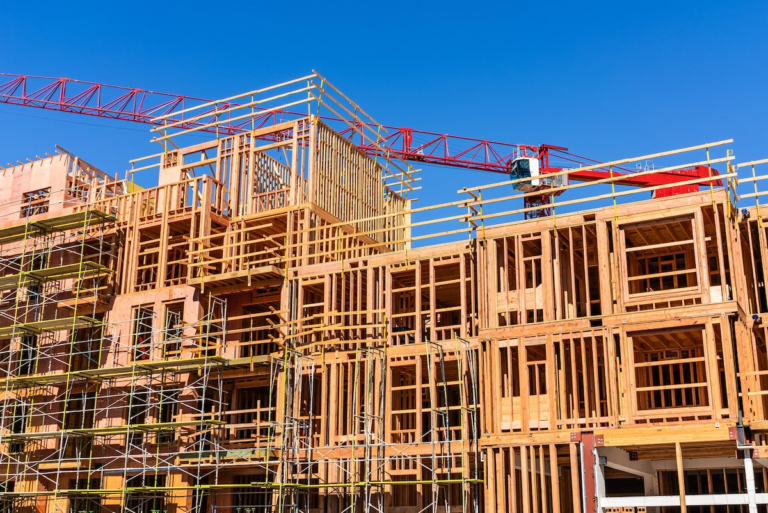
With the current rising inflation across the country, one market has pressed forward based on the increasing demand: multifamily commercial real-estate (CRE). CRE continues to be at an all-time high across the country. But one area is often overlooked – building technology flow into a project in order to meet the increasing demands and expectations of guests and residents.
Building technology interoperability, intuitiveness, scalability, or user experience are often not part of the building programming and design process. Most often, if technology is considered before construction, it occurs after the building floor plans are already defined and is limited to bandwidth, coverage, cabling runs, access control, or security systems. The secret to managing technology and ensuring that future demands are met lies in careful preparation.
The ideal time to start designing a strong foundation to support scalable technologies is early in the development planning process. Undoubtedly, building a new property, multifamily complex or mixed-use development involves more technology complexity now than ever before with an average of over 30 systems that need to interoperate, making it a challenge to implement while staying on schedule and within budget. When the owner or the developer engages a complete property technology partner with design capabilities early in the planning phase of the project, there is a vast opportunity to optimize the infrastructure of the building and the performance of the systems.
Many providers offer individual point solutions; however, a complete property technology provider can partner with the construction team to deliver professional new construction planning services from inception to completion to design, build and support an integrated, scalable ecosystem for all property technologies. The upside here is that there is specialization in the understanding of the latest technology trends, system requirements and future demands to ensure maximum performance.
Technology savvy developers and owners implement an approach balancing building operations with customer experience. This approach, when done well, prioritizes the user experience. The user experience is not limited to connectivity and security but considers space, lighting, aesthetics, reliability, intuitiveness, and the result is a “flow.”
Flow can be defined as a seamless and intuitive experience for the end user. A hotel customer experiences “flow” when they can check and access their room using their phone, as they move throughout the property their device automatically connects to secure networks, their room is already set to their desired temperature, the TV menu is familiar, they can order or services directly from their device, and all the hotel amenities are at their fingertips.
Multifamily resident flow is most often driven by tenant demographics or resident type. Older demographics may define flow as intuitiveness, convenience, security, and ease of use. Younger demographics may stress lighting, location of data ports, location of charging ports, multimedia amenities, and connectivity.
In either case “flow” is further enhanced by the intangible experience of intelligent and integrated design. When not considered during the design phase, technology components like access points (the devices that broadcast the Wi-Fi signal), entertainment set top boxes, routers, cameras, access control devices (card readers, magnetic locks) can appear as bolt on appendages to an otherwise beautiful space. Truth is much of the poor aesthetics of technology devices are attributable to device manufacturers themselves. However, when considered as part of the design, owners and designers can prioritize device aesthetics along with performance and function.
Once a plan is in place, the ability to handle the design of the infrastructure and cabling—in addition to the installation of the technologies that run off the network—can make or break a construction timeline and budget. When a thorough technology planning process is followed, developers can rest assured that no system is unaccounted for during the schematic design phase, systems are deployed with future requirements in mind and the project completes on time, within budget and with all architectural and functional needs met. All of this provides the overall flow for residents and guests.
Additionally, proper planning and project management provides the interior design team with the opportunity to align the implementation of the systems with the aesthetic needs of the building, minimizing the risk of incurring additional expense or delays in opening. In addition to building the technology flow into projects, developers can eliminate the stress and potential timeline constraints of having to coordinate the deployment of multiple technologies by separate vendors throughout the various stages in the project by engaging with a complete property technology provider.
By contemplating property wide end-user applications and services early in the development process, developers can also reduce capital expenditures and ongoing operating expenses by centralizing their technology needs with a single partner who manages all technology needs from project inception through to ongoing managed support. Implementing these traditionally disparate systems as a fully integrated solution offers cost synergies of 15-20% in upfront costs when factoring in hardware, installation and configuration. Additionally, a reputable technology provider can advise building automation enhancements in the planning stage that can result in government incentives for added savings once implemented.
Symbiotic to the guest or resident experience is the building operator and ownership experience. The user experience and aesthetic may drive the user interface, but the interoperability, scalability, reliability, ease of management, serviceability, and return on investment are driven by an intelligent and comprehensive design that is completely integrated with the building architecture.
When technology is considered early in the programming phase, and integrated with the building design, thought is given to cabling, serviceability, location of data closets, locations of visible devices, system scalability (future proofing by providing additional switching and routing capacity or additional cabling for instance), accessibility (how key components can be accessed for servicing or replacement).